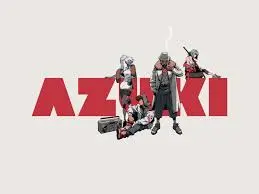A Brief Analysis of the NFT "Group Purchase" Protocol Tessera Led by Paradigm
Source: The Way of the Metaverse
According to data statistics, in the past 30 days, the average daily trading volume of the NFT market OpenSea has dropped to $16.6 million, while its average daily trading volume over the past year was about $83.28 million. Clearly, the NFT market is showing signs of decline.

(Note: Image from theblock)
So, is NFT going to "die"? Just based on the data trends, most people would probably think so.
However, some investment institutions with "gigabrain" are going against the tide. According to DeFi Dao reports, the NFT platform Tessera recently completed a $20 million Series A funding round led by Paradigm. Additionally, Uniswap Labs Ventures, Focus Labs, eGirl Capital, Yunt Capital, and over 50 individual angel investors participated in the funding. Tessera's predecessor is actually the NFT fractionalization protocol Fractional, which also secured $7.9 million in seed funding led by Paradigm during last year's NFT bull market.

Daring to increase their bets against the backdrop of the NFT bear market, investment institutions are naturally optimistic about the future prospects of Tessera and the entire NFT market.
So what exactly does Tessera do?
Tessera's New Fractionalization Protocol
According to a blog post by Tessera co-founder Andy8052, its original fractionalization service Fractional.art will continue to exist, and its key functions, such as purchasing fractions through the front end, initiating buyouts, and claiming NFTs, will be retained. Additionally, NFTs won through collective bidding via PartyBid will continue to appear in the fractional.art browser.
However, it is worth noting that Tessera will no longer actively develop the Fractional.art interface, and at some point in the future, the Fractional.art website will be phased out, with related functions transferred to Tessera.
Moreover, the "Fractionalize" fractionalization feature on the Fractional.art website will be disabled, and the interface for creating new vaults on Fractional.art will also be discontinued (but users can still perform fractionalization operations by interacting with smart contracts).
Thus, it can be seen that the original fractionalization solution has been rejected by Tessera. Andy8052 explained Tessera's next steps:
"We hope to help build a world where anyone has the opportunity to collectively own and manage the things they cherish, without relying on centralized gatekeepers to make decisions and take actions on their behalf. In the coming months, you will begin to see us launch new and exciting ways to own NFTs online with friends and strangers."
According to the design document for Fractional V2, the new protocol is designed around the concept of Hyperstructures (a concept proposed by Zora co-founder Jacob), which requires no maintenance and does not need intermediaries. Additionally, the new protocol adopts an NFT fractionalization scheme called "RICKS," which ensures that fractions can always be converted back to their underlying NFTs while avoiding liquidity and coordination issues associated with all-or-nothing buyout auctions.
Another significant change is that tokens fractionalized using the V2 protocol will no longer be speculative homogeneous ERC-20 tokens, but rather ERC-1155 standard tokens used to manage non-custodial vaults containing NFTs.
Exploring Trustless Game NFT Aggregation Services
In addition, Tessera is also exploring new game NFT aggregation services. For example, it recently launched an NFT aggregation service for the sci-fi card game Parallel. Simply put, Parallel will distribute its most important resource, the Prime token, to cardholders through staking, and forming Parasets will allow players to obtain more Prime tokens. However, since Parasets require collecting multiple cards, and some rare Parasets can be very expensive (for example, the current secondary market price for a set of PD1 Art Cards is 143.5 ETH), this makes it difficult for most NFT holders to complete such collection tasks and thus unable to earn more rewards.

The tools provided by Tessera allow holders of Parallel NFT cards to team up to gather Parasets and obtain Prime token rewards through staking. Then, through the Splits protocol, the tokens will be distributed to NFT holders, and as the service provider, Tessera will charge a 10% fee in Prime tokens.
All of this is achieved through smart contracts, which means that if the contracts are free of vulnerabilities, players can safely pool their NFTs together and unlock more rewards. (Note: The code for this service has not yet been audited.)
Here’s another well-known example from traditional gaming: in the game World of Warcraft, there are difficult boss encounters, and defeating these bosses can yield richer game rewards. However, due to trust issues among players, it is impossible to pool the best gear together, putting most guild players at a significant disadvantage. If a trustless method could be provided, allowing ordinary players to confidently entrust their gear to others and receive corresponding rewards, there would be a huge demand for such a service, and as a service provider, one could earn considerable income from it.
However, this will clearly face significant challenges, as different games have different rules. Therefore, Tessera needs to select suitable games and tailor solutions for them. Naturally, the blockchain game Parallel, also backed by Paradigm, will be one of the first to receive support from Tessera.
A Few Thoughts
Currently, Tessera's two NFT business lines target two different markets. The fractionalization service is aimed at high-value art collectibles, such as Doge meme photos, CryptoPunks, Bored Ape Yacht Club, Cool Cats, etc., which were the stars of the last NFT bull market. In contrast, Tessera's new aggregation NFT service route targets the emerging blockchain gaming market, which has a more obvious application scenario.
Lastly, regarding the project governance token, Tessera's current Discord FAQ page mentions that it currently has no tokens or airdrops, but anything can happen.
However, one point to note is that before taking any action, we need to ask ourselves two questions: (1) Do we still have confidence in the NFT market? (2) Are we optimistic about Tessera's business direction?











